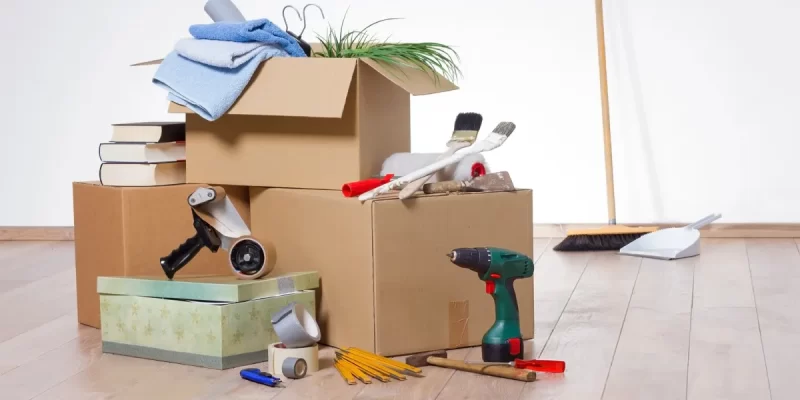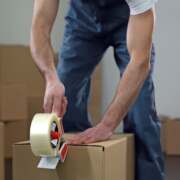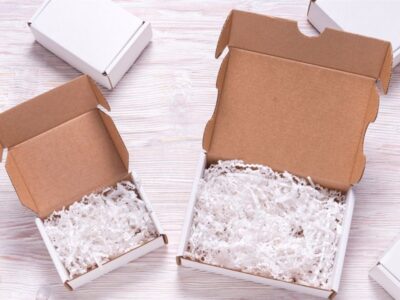Getting ready to move? Moving can be a stressful and overwhelming experience or a cathartic new beginning. When you’re ready to change homes, you need to know what to take with you and what can go. That’s where organizing comes in. From shipping your car to color-coding your boxes, these moving tips and tricks from a professional organizer will keep your moving process simple.
1. Consider Shipping your Car
As soon as you know you’re moving, it’s time to plan your car’s journey to your new home. Do some research into moving companies and car shipping companies early to get the best deals and lock in low pricing. Starting early will give you the best prices available.
Before you book a date with a car shipping company, make sure to go over every line in the contract. Find out if the auto shipping company offers insurance for protecting your car while it’s in transit.
2. Make a Moving Plan
It’s always a good idea to make a detailed plan for your move. Get any paperwork in order and make a master moving file that you can refer to throughout your moving process including the hot tub on deck. This file will help you remain on track and ensure that you stay on schedule in terms of packing.
One of the important things that needs to be done a few months prior to the moving date is to look for an affordable moving company. There are endless resources on the internet to find an affordable mover, one such resource is an in-depth review of the best cheap moving companies by MovingAsute.com. Here you can find the review of the best moving companies in the United States that are also cheap.
Once you’ve made a detailed plan, it’s time to take a good hard look at your possessions and see what you should take and what needs to go. Prepare your old home for vacancy and your new home for your arrival with these moving tips and tricks from a professional organizer.
3. Develop a Vision
You’re moving to a new home. That home will have a different aesthetic than your old home and not everything will fit. You should envision what you want your new home to look like, then toss, sell, or donate everything that doesn’t fit that vision. Also, consider practical aspects like setting up utilities, such as arranging to get fiber internet installed, to ensure a smooth transition into your new space.
Actual drawings or floor plans can be invaluable for this step. You can plan which furniture, appliances, and décor items will be moving to your new home and which will not. Start with the big furnishings like beds, couches, and appliances, then move to smaller possessions like clothing, dishes, and knick-knacks.
Check organizing, decorating, and DIY blogs for inspiration and get excited about your new home. Staying excited is one of the best moving tips to get you through some of the not-so-fun parts of organizing.
4. Declutter and Let it Go
One of the best moving tips and tricks from a professional organizer is to take a good, long look at your possessions. Once you have a vision for your new home and you’re excited about the move, decluttering should be easier. Start by making a list of what will go in each room. If you have the floor plan handy, you can even measure and mark off the exact positions of furnishings and decor.
Separate all your belongings into three piles: Trash, Donate, and Keep. These should be your guides for sorting everything in your home. If it is useful and will continue to be so in your new home, keep it. If it’s in good condition but no longer useful to you, donate. If it’s no longer useful to anyone, trash it.
Letting go will be the hardest step in decluttering, but you must remember that the more you move, the more exhausting it will be. This is especially true if you’re moving cross country. If there are items in your life that no longer serve a purpose, let them go. Usually, you can find another use for the item or donate it to someone who might need it.
Avoid packing up food items since these will only take up valuable storage space for more important belongings. You’ll have to consume or give away food anyway once you clean out your fridge in preparation for moving out. Remember also that you will likely be able to replace these food items when you get to your new home.
5. Repurpose
You can repurpose everyday items for storage, but this is especially good for moving. One of the best moving checklist tricks is to keep your drawers full and use hampers, baskets, and other drawers to pack and move smaller items. It’s best to keep your belongings together by room and use the space you’ve created to pack smaller items in with the bigger ones.
You can also apply these moving tips to kitchenware. Pack utensils in cups or bowls and nest smaller items in with larger items that fit. Wrap breakable items and bottles well to avoid liquid spills and breakage.
6. Sell and Donate
When you’ve picked out everything that is useful to you or fits in your new home, it’s time to sell or donate the other useful items. You can hold a garage sale, offer your items at a consignment store, or use a local app to offload your unwanted items.
Whatever you don’t sell, you can donate with your lower-value items. Packing light or moving as little as possible is one of the best moving tricks you can use.
7. Organize
Now that you’ve gotten the clutter out of your life, it’s time to organize what you’re taking with you. Along with the rest of these moving tips from a professional organizer, consider the following packing strategies:
- Put heavier items on the bottom
- Balance boxes evenly
- Fill empty space with lighter objects
- Wrap breakables in linens
Take your time and pack each box carefully. You will be thankful for your thoroughness when it’s time to unpack everything, especially your fragile items.
8. Pack the Essentials
One of the most useful moving tips and tricks from a professional organizer is to pack an essentials box or bag. Use a small suitcase, a clear tote, or a designated box to keep your daily essentials with you. You might be spending one or more nights on the road, especially if you are moving cross-country and shipping your car. You will be glad you kept some necessities with you.
Here are some ideas for your essentials box:
- A change of clothes
- Linens (sheets and towels) for the new house
- Phone and computer chargers
- Medicines
- Keys
- Paperwork
Keeping your essentials with you will save you so much time during the move and when you finally get to your new home.
9. Label Everything Properly
Once everything is organized, you’re ready to put a label on it. Start by labeling each box or bag by room then list the contents. This can feel like a tedious task when you’ve got a whole house to pack, but these moving tips will save you so much time in your new house.\
Avoid packing items from multiple rooms in the same box. For example, keep items from the kids’ bedrooms separate from the items from the master bathroom. Make sure your boxes contain only items from the same room.
Once your boxes have been shuffled around a moving van, plane, or ship, you won’t remember what’s in each box unless you check the label. Once you have everything labeled by room, it’s time to color-code your boxes.
10. Color Code
This final moving trick from a professional organizer may be the most important to your sanity when you get to your new home. If you have boxes labeled appropriately, your unpacking will go so much easier, but what about the hustle of moving day?
With everyone moving in and out of your home bringing and placing your belongings, you need an easy way to communicate what goes where. The answer? Color coding. Choose a color for each room of your house and use colorful paper, post-its, or packing tape to mark each box in the appropriate color.
Through these color-coding strategies, movers will know where to put each box even without you telling them.
Takeaway: An Organized Move is an Easy Move
These moving tips and tricks from a professional organizer will help your move go more smoothly than you thought possible. Be sure to leave plenty of time for each step and start your packing process as soon as possible. Planning out your packing schedule gives you plenty of time to declutter, organize your belongings, and properly label your boxes.














Comments